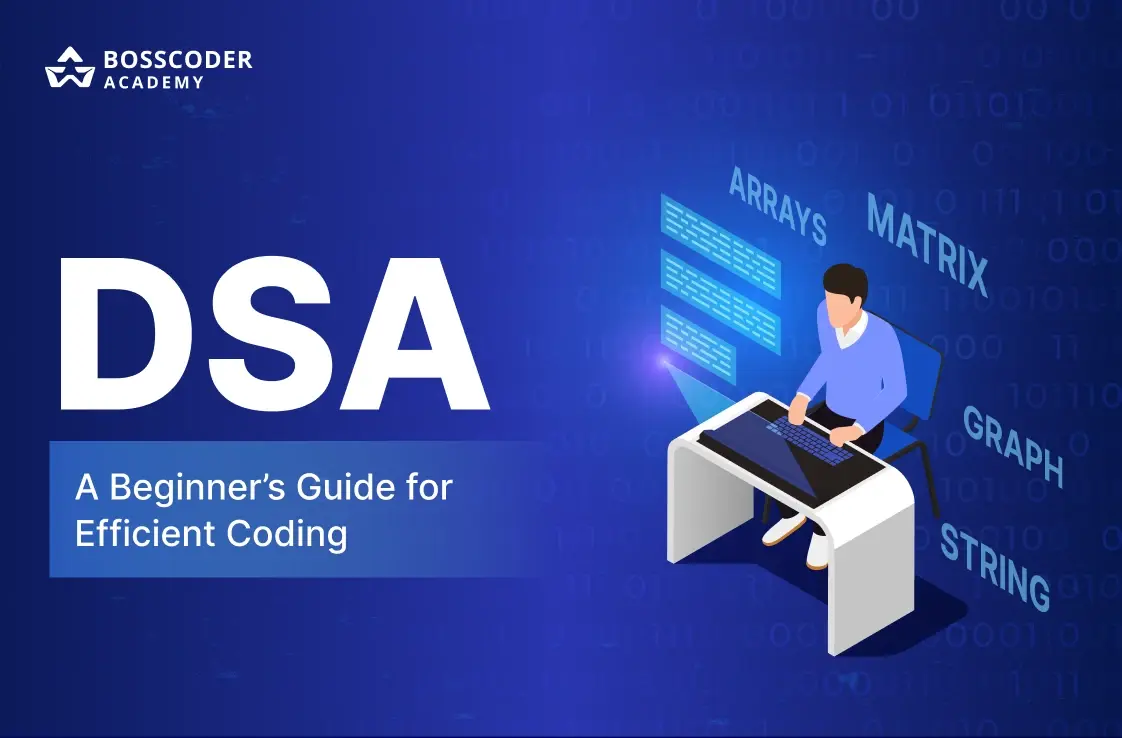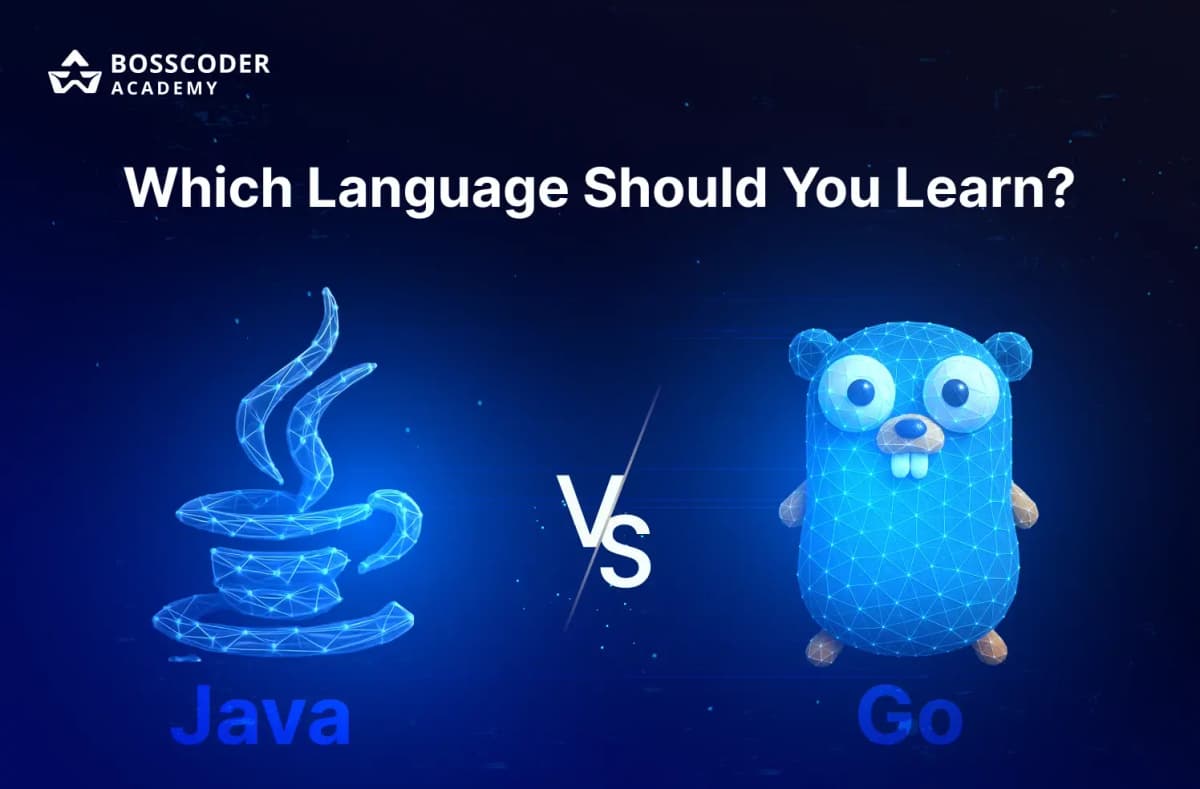Data structures and algorithms are the basis of coding and efficient problem-solving. Whether you’re new to programming or aiming for a job at a product-based company, learning about DSA can help you write better code, solve difficult problems, and understand how computer systems work.
In this blog, we will cover the basics of data structures and algorithms, including common data structures, basic algorithms, and advanced algorithms. You'll learn what they are, why they’re important, and the essential skills needed to succeed. However, before starting the blog, let’s first discuss what data structures is.
What is Data Structure?
Data structures are ways to organize and store data in a computer so it’s easy to access and manage. Think of it like sorting your toys, you might keep toy cars in a box and books on a shelf for easy access. Likewise, in programming, we use different data structures to handle different kinds of data efficiently.
Common Data Structures You Need to Know
Data structures are important tools in programming. Below, we have listed some of the widely used data structures:

1. Array
Array are basic data structures that store multiple items of the same type in one memory block.
Key Features of Arrays:
- Indexed Access: Elements in an array can be retrieved through the position numbers which serve as indexes.
- Efficient Storage: Arrays organize data through adjacent memory storage thus providing maximum performance for element access and modification operations.
- Widely Used in Algorithms: Arrays provide essential capabilities which enable algorithms to sort data and search through it and perform repetitive operations.

Drawbacks of Arrays:
- Fixed Size: The defined array size becomes permanent once declared during initialization because array sizes remain unalterable.
- Insertion/Deletion Limitations: Adding or removing elements (particularly in the middle) takes time since it involves moving several elements.
- Memory Wastage: The allocation of unused array memory space after declaring its size leads to memory wastage.
2. Linked List
Another frequent data structure is linked lists, which are made up of a sequence of nodes (as shown in the figure) connected by links.

Key Features of Linked Lists:
- Dynamic Size: Linked lists remain suitable for use because their size remains undefined or dynamically changes.
- Efficient Insertion/Deletion: The insertion or removal of list elements works efficiently since it does not require element shifting like arrays do.
- Memory Utilization: The data structure efficiently utilizes memory through its ability to allocate space just when needed (without defining fixed sizes).
Drawbacks of Linked Lists:
- Slower Access: The list needs to traverse its elements one by one for direct access.
- Extra Memory Usage: Each node within the list requires supplementary memory space to store another reference entry.
3. Stacks and Queues
Stacks and queues are linear data structures that organize data based on specific order principles.
Stacks (LIFO – Last In, First Out):
How it works:
- The last item added is the first one to be removed.
- When you place books on a stack you always put them on top and remove from there.
Operations:
- Push: Add an item to the top
- Pop: Take the top-most item out of the stack
- Peek: shows you the stack's top item but leaves it untouched
Common Use Cases:
- Undo operations in text editors
- Function call management in recursion
- Expression evaluation

Queues (FIFO – First In, First Out):
How it works:
- The system removes the item added most recently.
- The system handles requests based on arrival time like a line at a ticket booth
Operations:
- Enqueue: Add an item at the back
- Dequeue: Take an item out of the front position
- Peek: You can observe the front item without taking it out of the stack
Common Use Cases:
- Task scheduling
- Handling requests in servers
- Print queue management
4. Trees
Tree is a nonlinear data structure consisting of a root and its branches in form of other nodes. This means that each can again have its own children, making them look like trees where one grows out of the other.

Key Features:
- Starts with a root node
- Every node also can have more than one child
- Shows hierarchical relationships
- It is mostly used in file systems, organization charts, and databases
Drawbacks:
- Can be complex to manage
- Specific operations like searching can be slower if not balanced
- Requires an additional memory for pointers to child nodes
5. Graphs
Graph is a data structure that amalgamates nodes (also known as vertices) and the links between the two entities (also known as edges). It demonstrates the kind of connection that exist between two or more various things.

Key Features:
- Made of nodes and edges
- Shows relationships between items
- Can be directed/undirected, weighted/unweighted
- Used in maps, social networks, web links, etc.
Drawbacks:
- Can be complex to implement
- May use more memory
- Some of the graph algorithms are computationally heavy
6. Hash Tables
A hash table it a fast method of storing and searching item where the search item is put through a hash function before being stored in the computer’s memory. It assigns values to specific positions of an array.

Key Features:
- It is a method that applies a hash function to generate a key for an index
- Enables fast data access (on the average, time complexity is O(1))
- It is used especially in maps, sets, and databases
- Applicable in working with large data-centred systems in the backend functionality of software systems.
Drawbacks:
- Collisions may happen, in which different keys are represent by the same index
- The efficiency decreases when the hash function quality is low or when resizing is often performed
- Consume more memory than other traditional data representations such as arrays or lists
7. Heaps
A heap is a data structure that keeps data organized, with min-heaps having the smallest value on top and max-heaps having the largest.

Key Features:
- Keeps data automatically ordered
- Good for priority operations such as scheduling
- Facilitates the random/offline access to min/max values
- Popular in sorting algorithms such as Heap Sort
Drawbacks:
- They are not well suited for searching for particular elements
- Can be slower than array for some operations
- It can be challenging to manage the structure of an interface during the update process.
What are Algorithms?
Algorithms are step-by-step instructions to solve problems or complete tasks, like following a recipe.
- In coding, algorithms help computers perform tasks efficiently.
- They are used for sorting lists, searching data, and finding routes.
- The choice of data structures affects how well algorithms work.
- Common types include search, sorting, and graph algorithms.

Common Algorithms You Need to Know
- Sorting Algorithms
These algorithms are used to rearrange data in a particular sequence, such as ascending or descending order. Sorting algorithms like merge sort, insertion sort, quicksort, heap sort, and counting sort are essential for organizing data, and you can implement them easily using Python, a versatile language for learning DSA.
- Search Algorithms
Search algorithms are used to locate a specific piece of data within a larger collection of data. Binary search is one example of a search algorithm.
- Path finding algorithms
Pathfinding algorithms determine the shortest or most efficient path between two points in a graph or other data structure. Pathfinding techniques include Dijkstra's algorithm and the A* algorithm (A-star).
- Recursion
Recursion is a popular programming method that involves defining a function in terms of itself, commonly by calling itself with a reduced version of the original problem. Recursion is usually used to solve issues that can be broken down into smaller, similar subproblems.
- Dynamic Programming
Dynamic programming is a method for solving large issues that involves breaking them down into smaller subproblems and storing the answers so that they can be easily reused. Dynamic programming is widely used to solve issues with an overlapping subproblem structure, in which the same subproblem is handled again.
- Graph Algorithms
The graph algorithm is particularly used to work with graphs. A graph is a data structure made up of vertices (or nodes) and the edges that connect them. Graphs show relationships between items and are regularly used in a variety of professions, including computer science, mathematics, and engineering.
Why Learn Data Structures and Algorithms?
Learning data structures and algorithms (DSA) is essential for problem-solving and writing efficient code. They help your programs run faster and use less memory by choosing the right solutions. Many top companies test DSA knowledge during interviews, making it a key skill for career growth. Below, we have listed some of the main reasons to learn DSA:
- Problem-Solving: Improves your logical thinking and problem-solving skills.
- Efficiency: It helps you to create faster and more memory-efficient programs.
- Career Growth: Learning data structures and algorithms (DSA) is essential for problem-solving and writing efficient code, and following a structured DSA Roadmap can guide you through the skills needed to ace technical interviews at top tech companies.
- Better Coding: Allows choosing the best solution for different coding challenges.
- Confidence: It boosts your ability to handle complex projects and real-world tasks.
Some Important Concepts You Need to Know
Some basic ideas can help you understand how well a data structure or algorithm performs. Knowing these will make it easier to choose the best option for your problem.
- Big 0 Notation
Big O notation is a way to describe how the performance of an algorithm changes as the input size increases. It helps us compare algorithms and understand their efficiency without focusing on the implementation details.
Key Points About Big O Notation:
- Definition: It describes the worst-case scenario of how an algorithm's operations grow as the input size grows.
- Time Complexity: Represented as O(f(n)), where f(n) is a function that shows how operations increase with input size.
- Example: If an algorithm is O(n²), the operations grow roughly as the square of the input size.
- Common Complexities:
- O(1) → Constant time (Fast and independent of input size)
- O(log n) → Logarithmic time (Efficient for large inputs)
- O(n) → Linear time (Operations grow directly with input size)
- O(n log n) → Linearithmic time (Typical for sorting algorithms)
- O(n²) → Quadratic time (Common in nested loops)
- Comparison: Algorithms with the same Big O notation perform similarly for large inputs, even if one is faster on small datasets.
- Time and Space Complexity
Time and space complexity are important for measuring how well an algorithm performs. Time complexity refers to how long it takes to complete a task, while space complexity refers to how much memory it needs. Here’s what you should know:
- Efficiency Matters: Algorithms should solve problems quickly and use minimal memory.
- Big O Notation: It’s a way to express how an algorithm's performance changes as the input size increases.
- O(1) → Constant time/space, no matter the input size.
- O(n) → Grows linearly as input size increases.
- O(n²) → Grows quadratically, common in nested loops.
- O(log n) → Grows slowly, often used in efficient algorithms like binary search.
- Time Complexity: Tells how long an algorithm takes based on input size.
- Space Complexity: This shows how much memory an algorithm needs to run.
- Goal: Aim for algorithms with the lowest possible time and space complexity for optimal performance.
Where Are Data Structures and Algorithms Needed?
Data structures and algorithms are used everywhere in tech to solve problems and make applications work efficiently. Knowing them is important for anyone in programming. Here’s how they’re used in real life:
- Apps and Websites: Apps and websites rely on sorting algorithms to arrange your social media feed and data structures to keep info organized, skills you can master as part of a Full Stack Developer Roadmap to build efficient, scalable applications.
- Games: Graphs help characters find paths in games like Mario, and algorithms decide the smartest moves. This makes the gaming experience smooth and responsive.
- Search Engines: Google uses search algorithms to dig up results and graphs to connect related pages. They ensure you get the most relevant information quickly.
- E-commerce: Trees power recommendation systems on Amazon, and sorting algorithms rank products by price or rating. These ensure personalized suggestions and seamless shopping.
- Daily Tools: GPS apps use graphs to map routes, and algorithms find the fastest way to your destination. They consider real-time traffic and suggest the best path.
Ready to master Data Structures and Algorithms and land your dream tech job?
Join BossCoder Academy today and get hands-on training, expert mentorship, and a proven roadmap to crack top tech interviews. Don’t just study; build real skills that get results.
Conclusion
Data structures and algorithms are a huge and interesting subject, with much more to learn than what is discussed in this article. Whether you are a beginner exploring the fundamentals or an experienced programmer trying to expand your knowledge, there are several sources accessible that will help you learn more about data structures and algorithms.
FAQs
Q1. What’s the simplest way to learn data structures?
Answer: Start with basic ones like arrays and linked lists. Visualizing them with diagrams can make understanding easier. Practice with simple examples, like storing and organizing a list of names or numbers.
Q2. Do I need coding experience first?
Answer: Having some coding knowledge is helpful, especially understanding loops, variables, and functions. If you're new, consider starting with Python since it’s beginner-friendly and widely used for learning data structures.
Q3. How long does it take to learn DSA?
Answer: It usually takes 3 to 6 months to grasp DSA concepts, depending on your dedication. If you can spend 1-2 hours a day practicing and solving problems, you’ll gradually build confidence. Consistency is key, so try to solve a variety of problems to strengthen your understanding.
Q4. How can I practice DSA?
Answer: Platforms like LeetCode, HackerRank, and GeeksforGeeks offer a vast collection of coding problems ranging from easy to advanced. Start with beginner-level problems and gradually move to more complex ones. These platforms also provide solutions and explanations, making them great for learning and improving problem-solving skills.
Q5. Are these just for interviews?
Answer: Not at all! While data structures and algorithms are often tested in interviews, they’re also essential for real-world projects. From social media feeds to navigation apps, companies rely on them to make applications run smoothly and efficiently.









